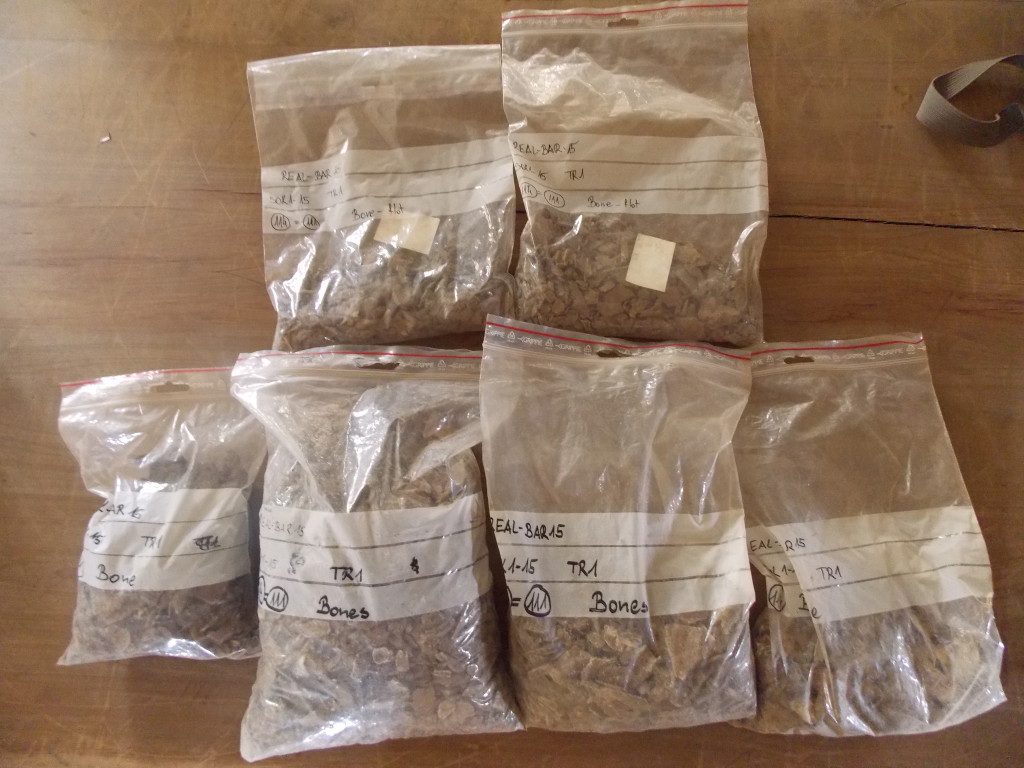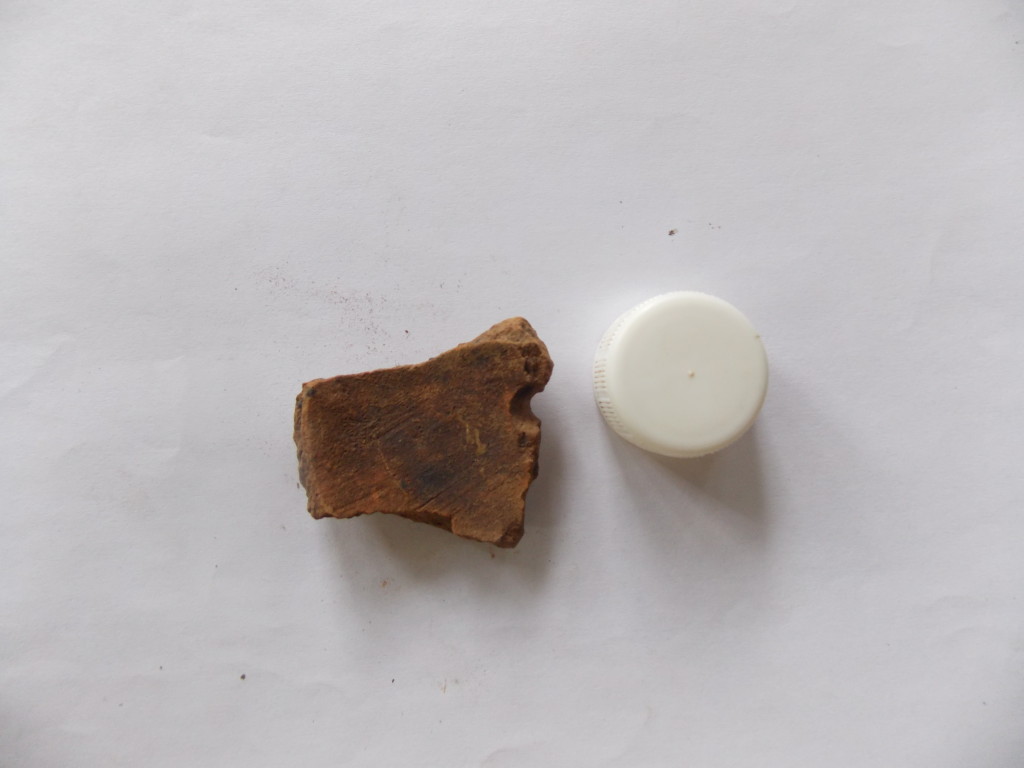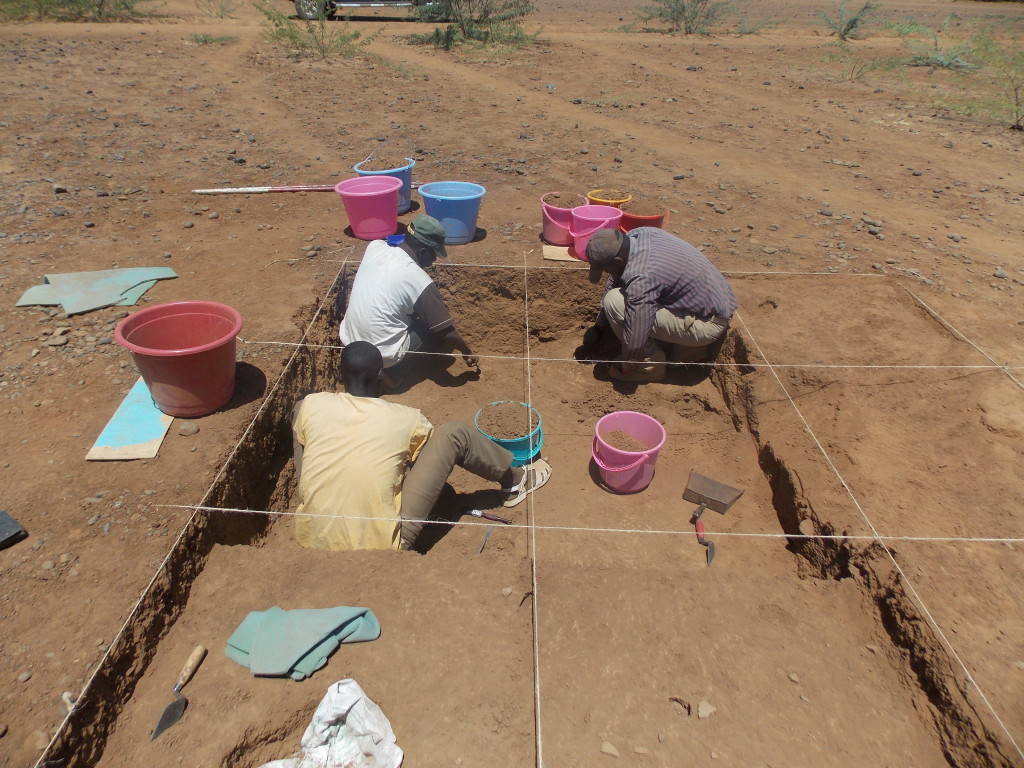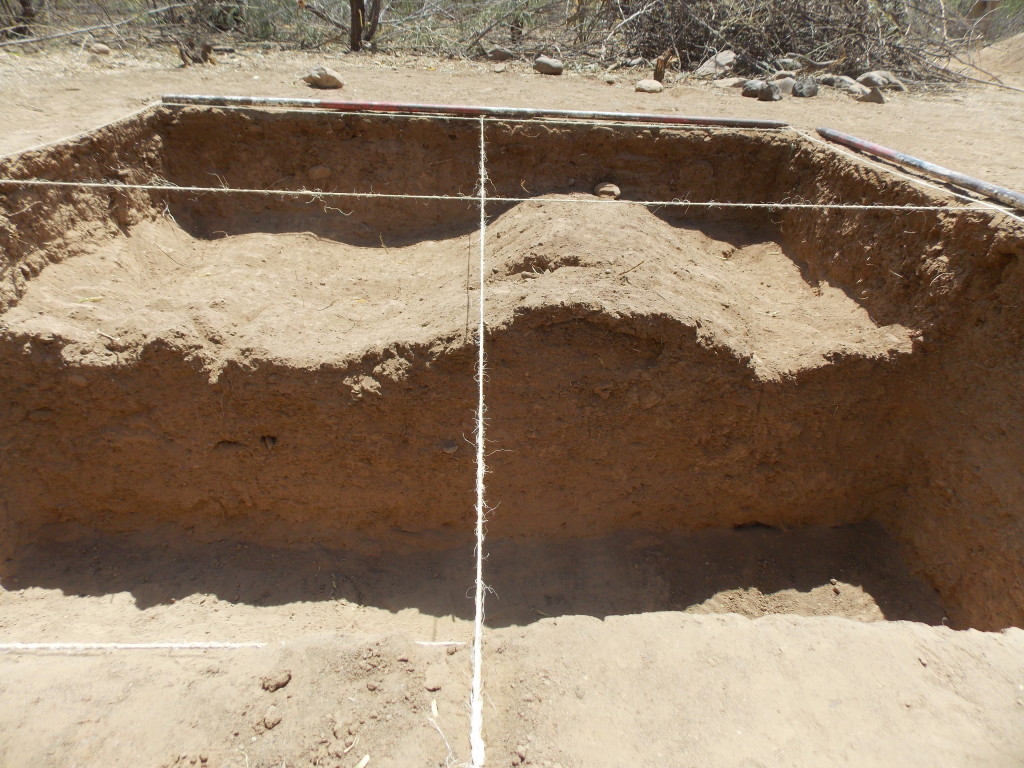From January to March, the extraordinary team exploring the archaeology around Lake Baringo set out on another adventure. Rather than endlessly walking through the landscape, discovering scatters of worked stone and shapely pottery, we returned to three sites we recorded during our previous fieldwork. The sites were subject to small excavations that uncovered a great amount of interesting finds and features, or nothing at all in one case.
First we excavated two sites in the village of Sokotei, next to Lake Baringo, that were threatened by plans to cultivate the land. The first site, aptly named Sokotei 1, was a Pastoral Neolithic site. During our previous fieldwork we found Narosura ware pottery here, while this fieldwork the pottery resembled Elmenteitan ware. A closer inspection of the pottery is still required however. At the site we also stumbled upon a pit where debris was burnt and a midden composed of mostly fishbones mixed with pottery and lithics. Unfortunately, the excavations were stopped before the team could reach the archaeologically sterile layers due to time constraints. Nevertheless, the site was extremely informative on the topic of early pastoralism in East Africa and more detailed results are soon to be available.
We cannot say the same thing for our next site, Sokotei 2. When we left the site in November 2014, it was obvious that the owner was going to cultivate the land as it has been already cleared. However, I was convinced that half of the site would remain unharmed because it was outside of the field’s boundary. So, returning to Sokotei 2 in 2015, we laid out the trench as close to the field boundary and as close to the centre of the site, and happily dug away. But it turned out that the site did not extend as far as our trench and we found only a few bone fragments from the site’s occupation. The team feared the rich site was destroyed. Fortunately, we were well equipped. So we took out our dumpy level and measured how deep the farmers dug into the soil, calculating if the archaeological layers have been damaged. It turned out, that while the layer might be slightly damaged, most of it is likely still intact.
After wrapping up in Sokotei, we moved south to Lorrok, where we excavated a site called Oltioki. The site had a dense scatter of flaked obsidian and plenty of decorated pottery, located in a murua (an abandoned homestead turned vegetation feature). We set a trench where the vegetation growth indicated that a house used to stand there and another trench just outside the murua, where we had a rich shovel test pit. But after two weeks of happily digging we stumbled on a problem. It turned out that the person we worked with was in fact the caretaker of the land (who we were more than happy to work with), and not the landowner. The landowner demanded us to pay 500 000 € to continue excavating on his land but after long negotiations we came to an agreement. After the team successfully solved another problem, another arose. It was caused by the same person, the landowner, who even pretended to be the police on the phone. After ending up at the police station in Marigat, the problem got solved and we returned happily but frustrated to our trenches.
Oltioki was very special, as we found an earthen structure, most likely remains of a wall. It was located exactly where we expected it, looking at the vegetation patterns. Additionally the stratigraphy on one side of the wall was vastly different to that on the other. Unfortunately no floors were present. The second trench was also rich in archaeological materials, but showed extensive perturbation. We finished our season with a good session of flotation and washing of artefacts, before returning completely exhausted to Nairobi.
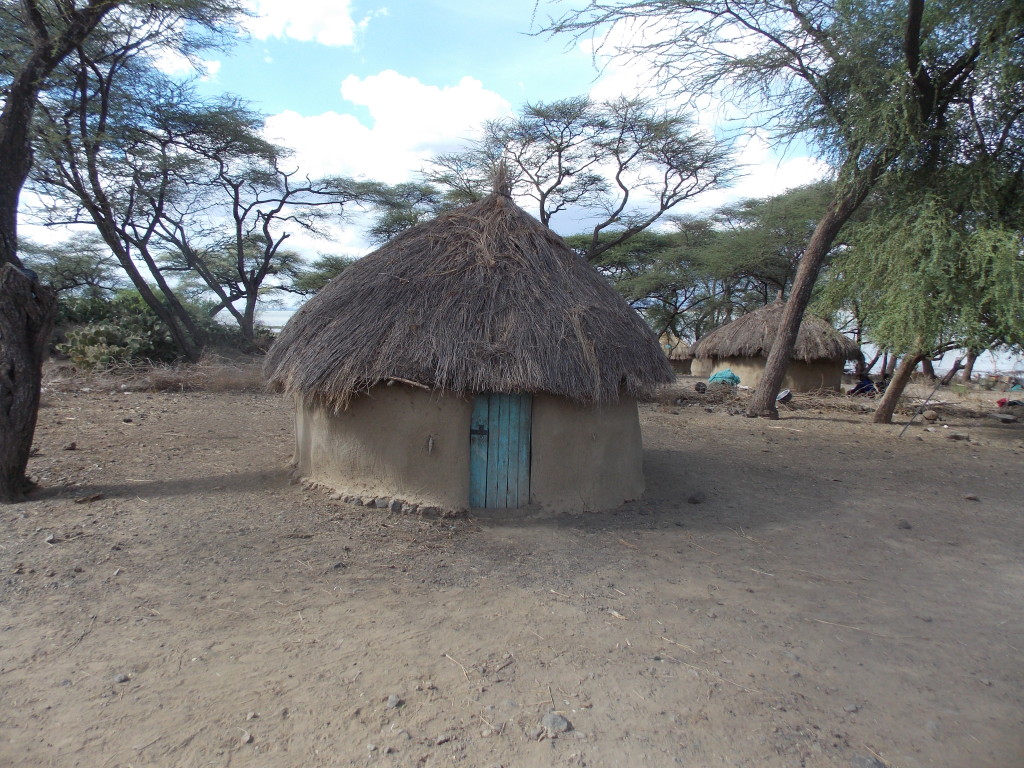
A typical Ilchamus house. The earthen structure at Oltioki likely resembled this house before it fell apart
I would particularly like to thank Wilson Tiren, Glen Nakure, John Munyiri, John Muasya, Pauline Lekimoe, Olesegun Moyib, Charles Muriithi, Lawrence Olemelto, Calvin Parasalach, Criticos Lendapana, Hassan Sakerin, Sam Nakure, Jennifer Lentapuru, and Jesinta Mateno.
